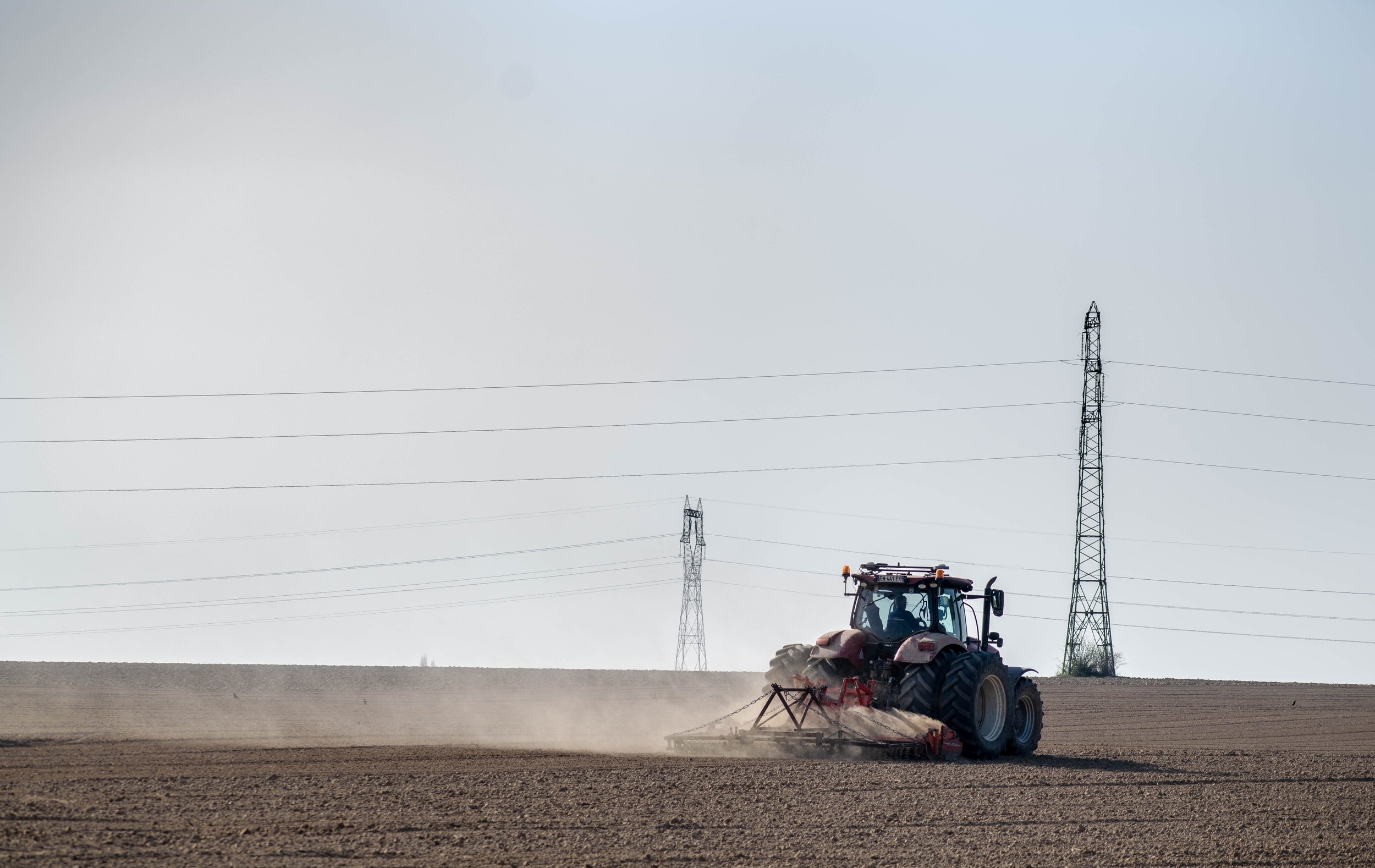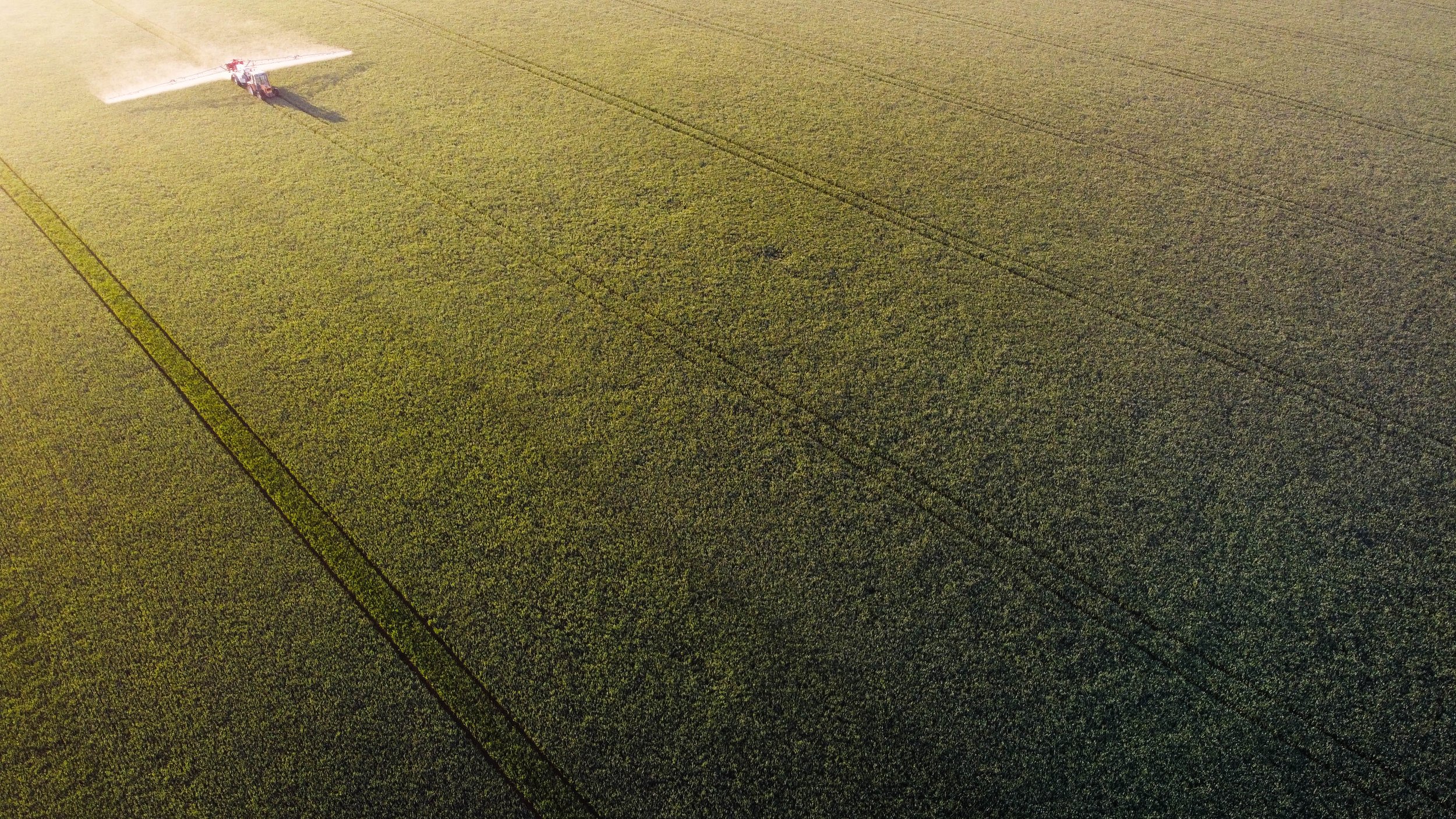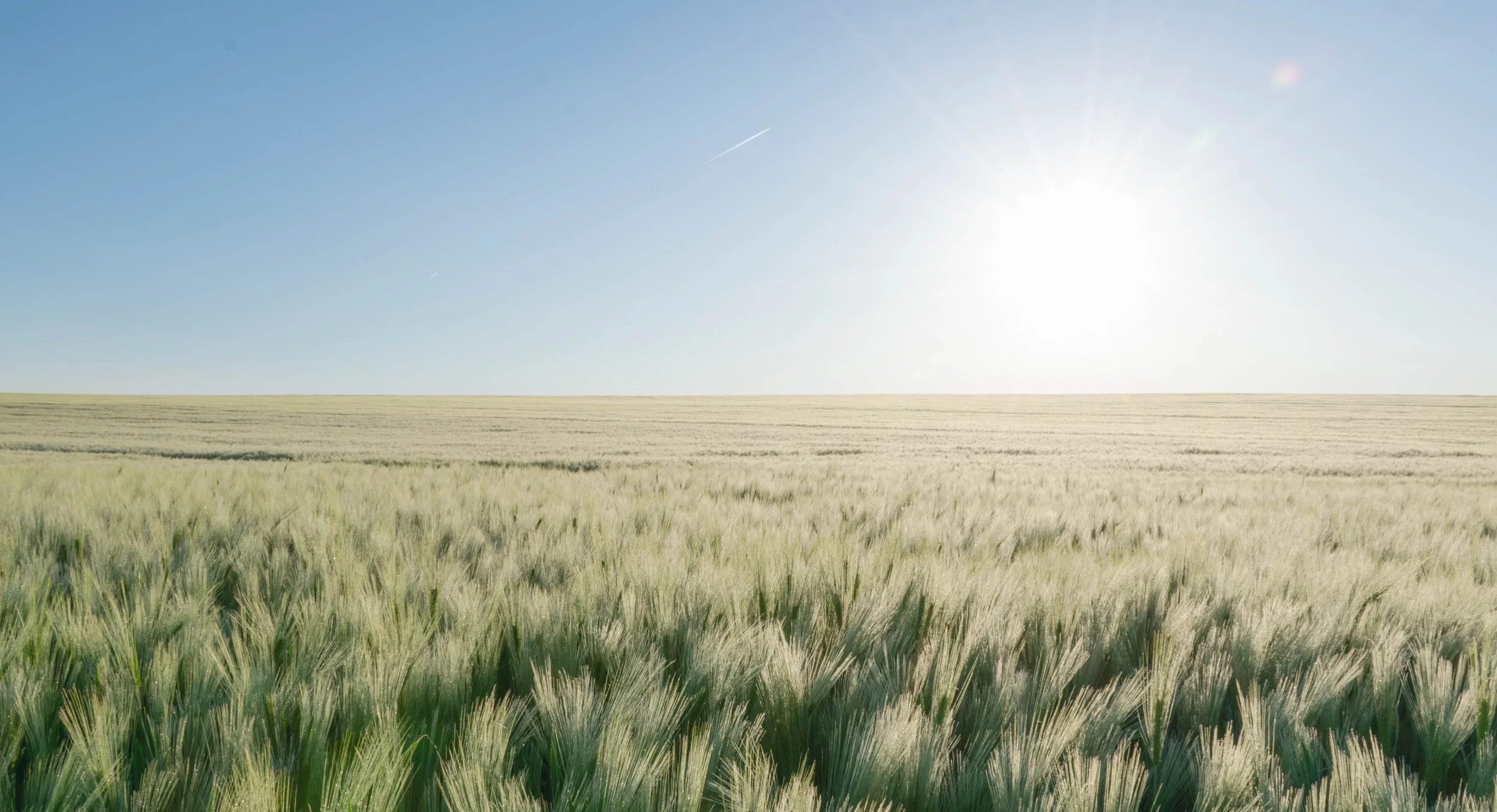
Large-scale farming
Let's explore here the work of the farmers of " large-scale crops " in Somme, Northern France, where the "rules" of agriculture, an age-old activity, have been revolutionized, where the geography, the standards and the scales that have conditioned and shaped the cultivation of the land since time immemorial have been stretched in proportions that I still struggle to grasp. A rural world as old as fascinating, yet keeping in tune with the modernity of our contemporary societies.
Long nets spread over long lines of salads, to offer a shelter agaisnt wildlife
What strikes me most while exploring these landscapes, still new to me, are the size of the fields and the technicality of the cultivations. Let's put things in perspective, I grew up in Brittany, a region of bocage and live stock farming with soils of average fertility, while the Picardy plateaus, with their extremely fertile soils, are intensively exploited to produce cereal crops (barley, wheat), root crops (potatoes, sugar beet, carrots) or even colza and peas. The hedges of trees between the plots or at the edge of the road as well as the ditches where ferns proliferate do not exist here, they used to though, when agriculture did not rely on tractors. The space is more monospecific too, less species. One can imagine the necessity to push the yields to feed a machine of 67 million inhabitants which even exports food.
This aerial view reminds me of a wild nature, but not very useful for us under that form, taking the shape of a Noah's ark -a shelter of vegetal species- splitting the waves of another world, vegetal too but living at a different rhythm, an army of a single species, changing completely every year, legions of plants growing in furrows, forming waves that this ship of grasses and shrubs crosses. I find a certain relaxation in these landscapes which seem to have been drawn with a string, or rather by a GPS-guided tractor, where the well-packed mounds of earth intended to accommodate potatoes remind me of the motifs of a Japanese dry garden.

the barren soil before the sprouting phase highlights its geological nature
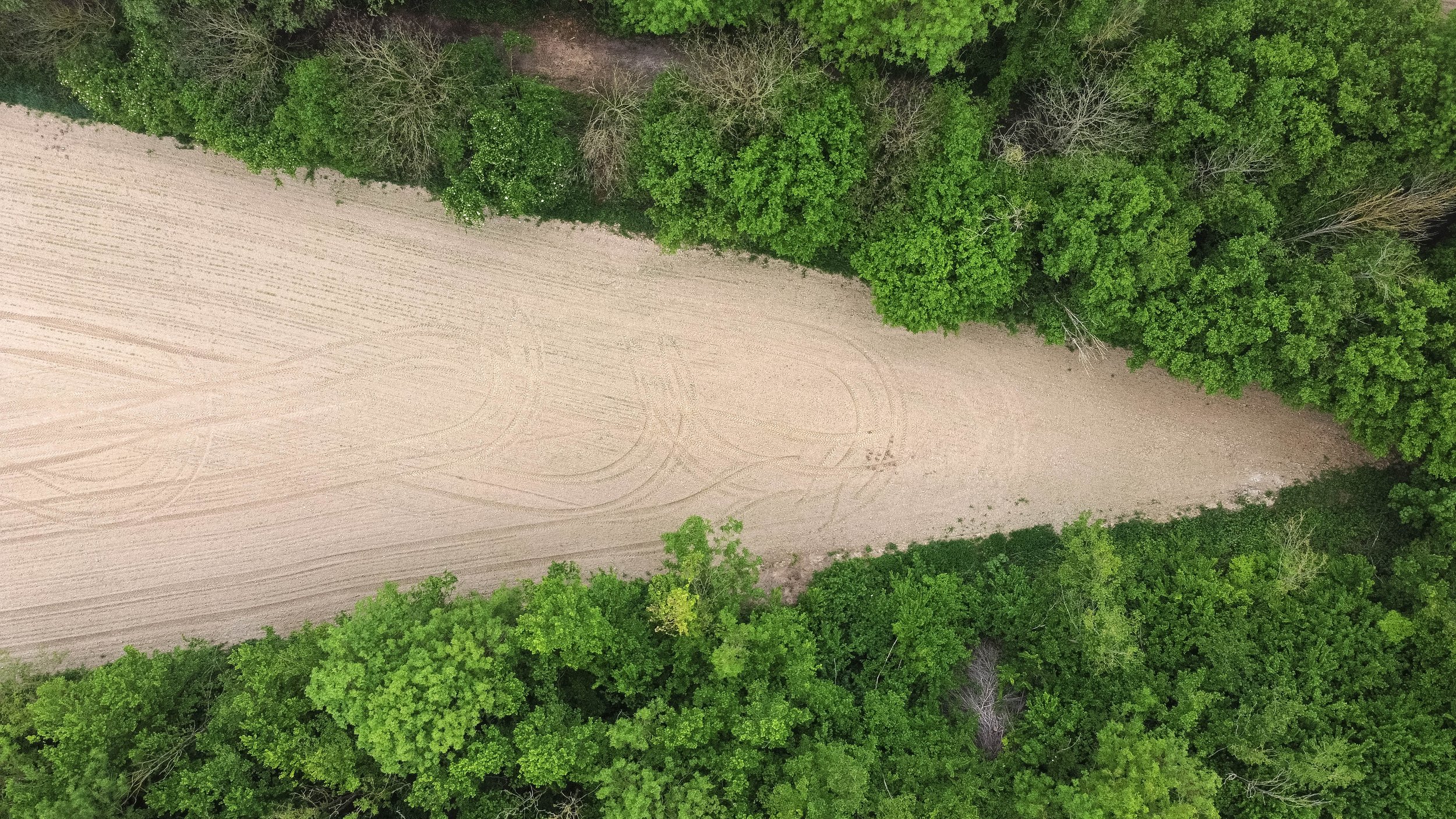
Incision, nature against culture. Which one is winning ?
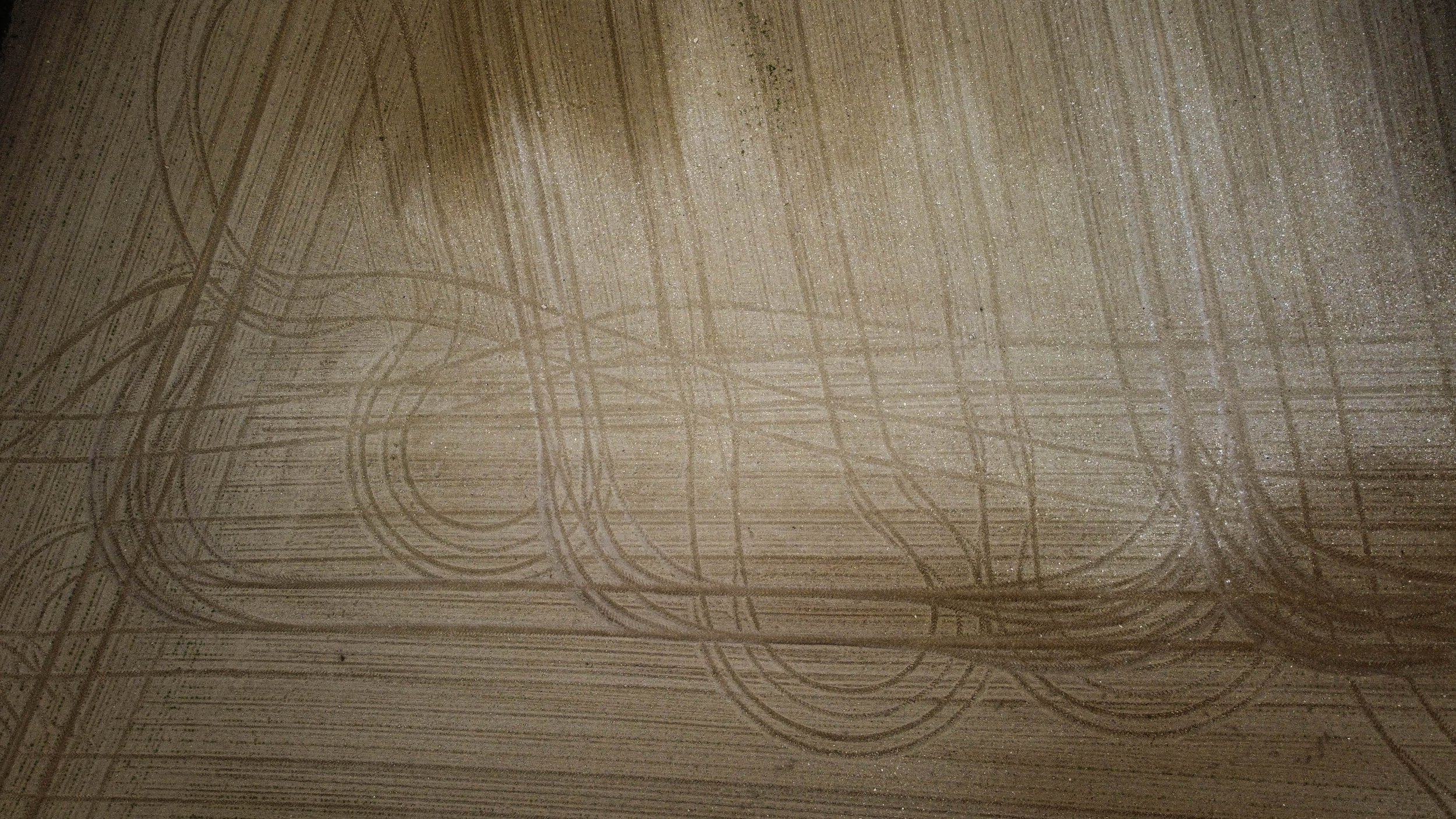
Tractors' ballet

Salads sheltered under nets from animals
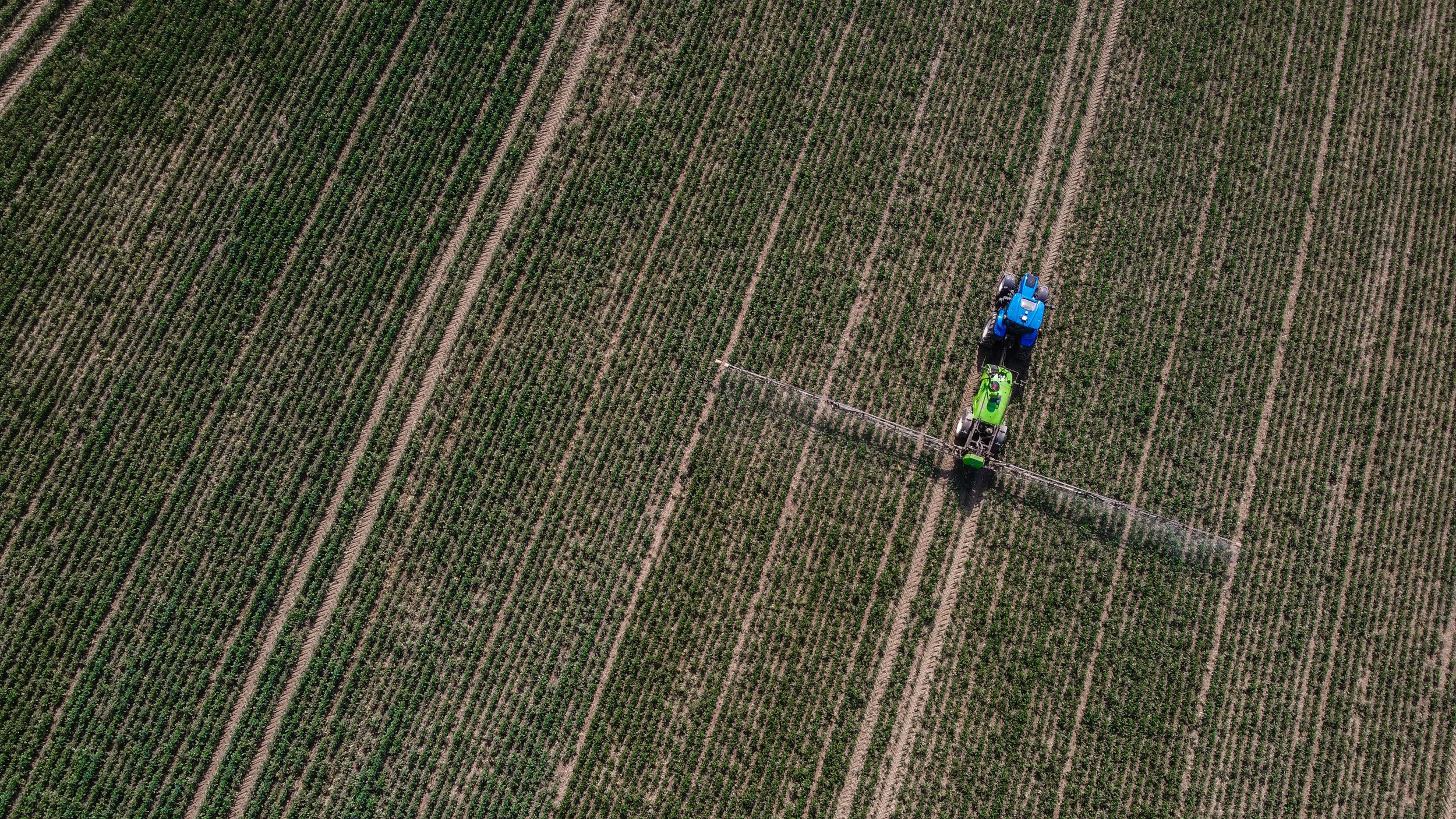
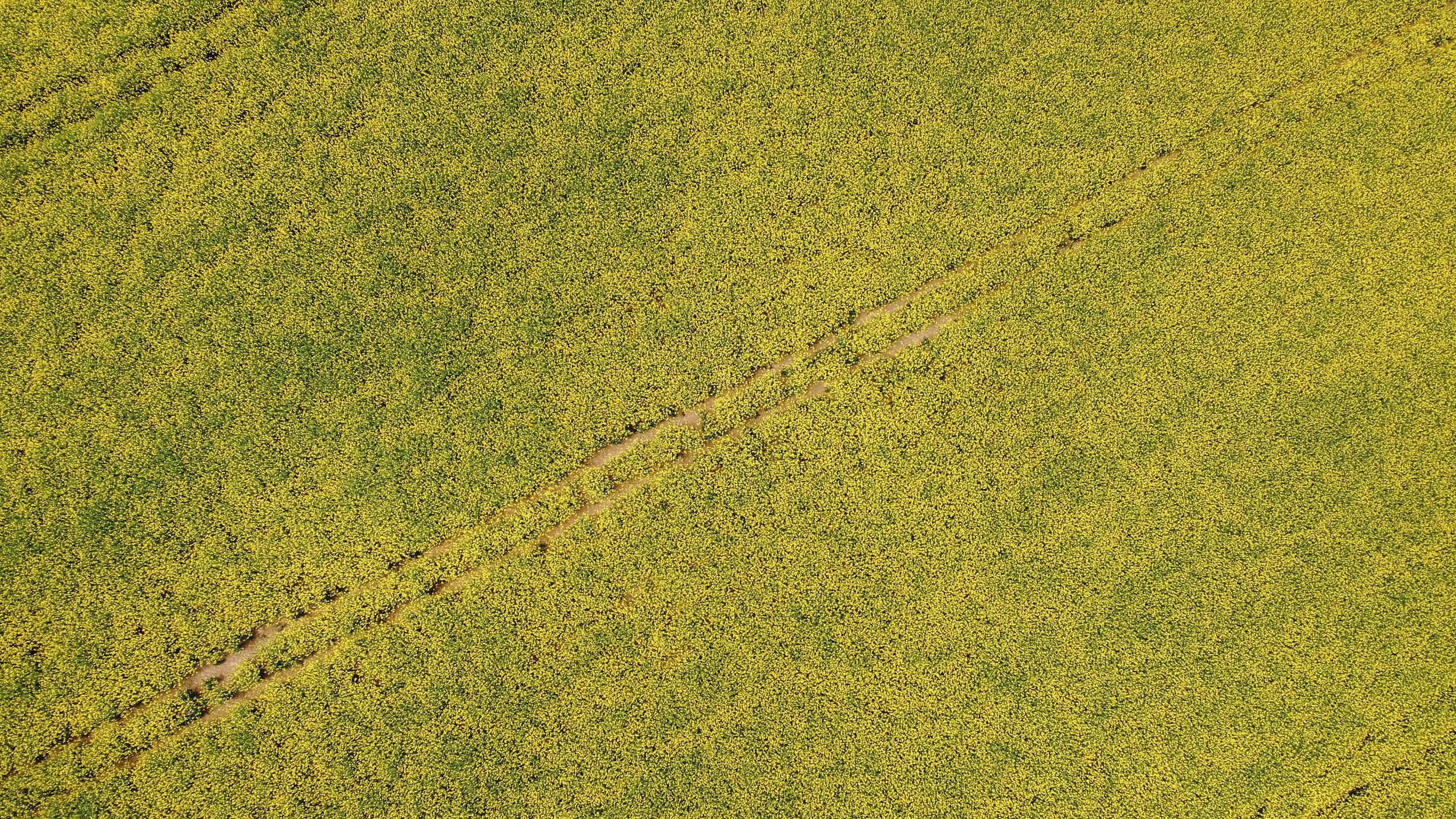
Colza yellow

A lush islet, a wild bunch, rebel plants.
The importance of soil
One sentence I've been told struck me the many times when I spoke with people about the agricultural landscape. I have sometimes asked if there were any orchards or market gardens in the area, to which they replied "No, the land is too good for that". I find this answer fascinating: usually, the physical geographical constraint (temperatures too low, too high, climate too dry, etc.) limits the number of feasible production activities, so one must by default choose the most profitable and feasible one too at the same time. Here, it is the opposite: the limit is up, all the conditions are met for many types of crops, but the soil and geography determines more than anything else what will be grown there: it will be large scale farming for cereals and tubers cultures, because growing anything else would be a waste of these so fertile lands.
Mr. Carpentier is adjusting the booms to apply the fungicide on 30 hectares
In a field, far from the main road, I meet Mr. Carpentier who is spraying nitrogen, a fertilizer, for a wheat crop, a type of crop that is suffering because of the drought that is raging this month of May. He has been a farmer in the neighboring village for as long as he can remember, like his father, his grandfather, his great-grandfather and probably even further back. I understand him when he tells me that "It is earth that flows through my veins, not blood! " He puts in a considerable amount of work in the fields all week, not to mention the accounting, which is the lot of most farmers today, but he doesn't seem to mind too much, that's just the way it is. This uncommon workload today is the reason his children don't want to succeed him, he tells me. Our service society, where everyone prefers to make a living working in an office and where food is more affordable and abundant than ever before, makes farming, especially here, a lonely profession where a single man takes care of several dozen hectares, behind the wheel of a big tractor, with his tools and where the prospects of enrichment are often slim. With his 100 hectares, which makes him a "small one" according to local standards, he farms the typical crops of the region and proudly tells me what is currently growing in his plots, very happy to chat a little with a stranger that has just popped in his field.


It takes no less than than that to feed a country
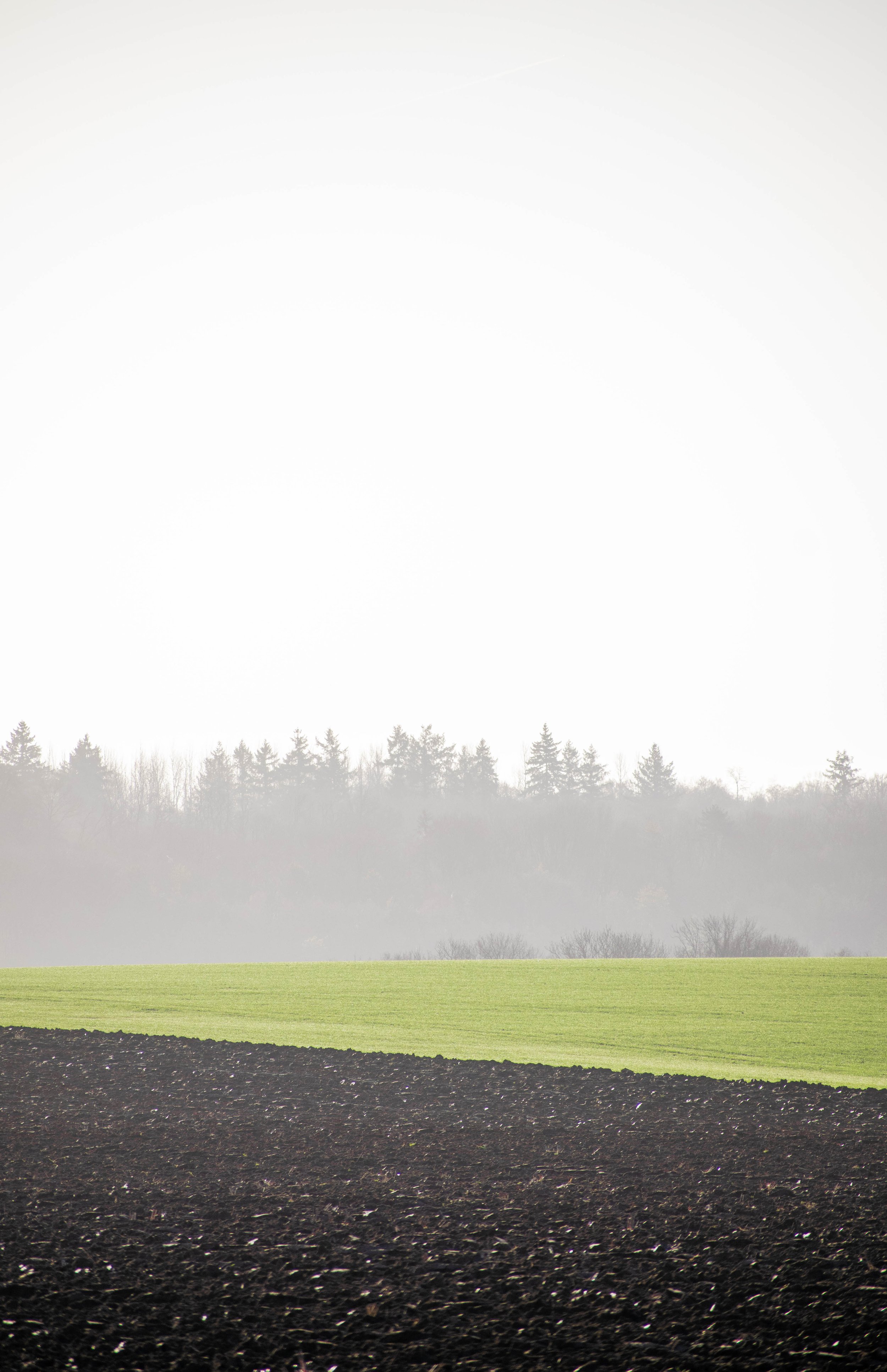

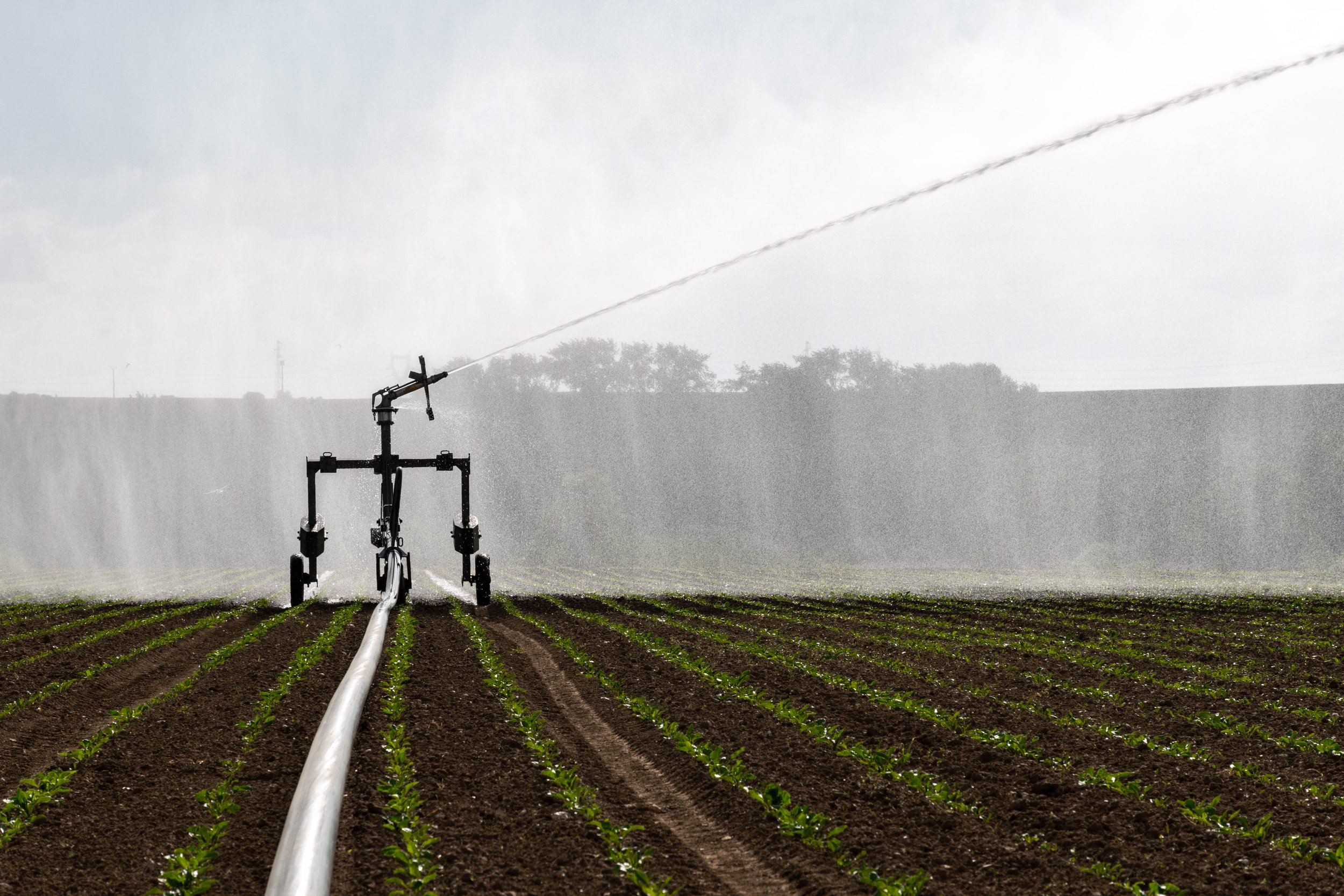


Many layers of soil

Life attracts life

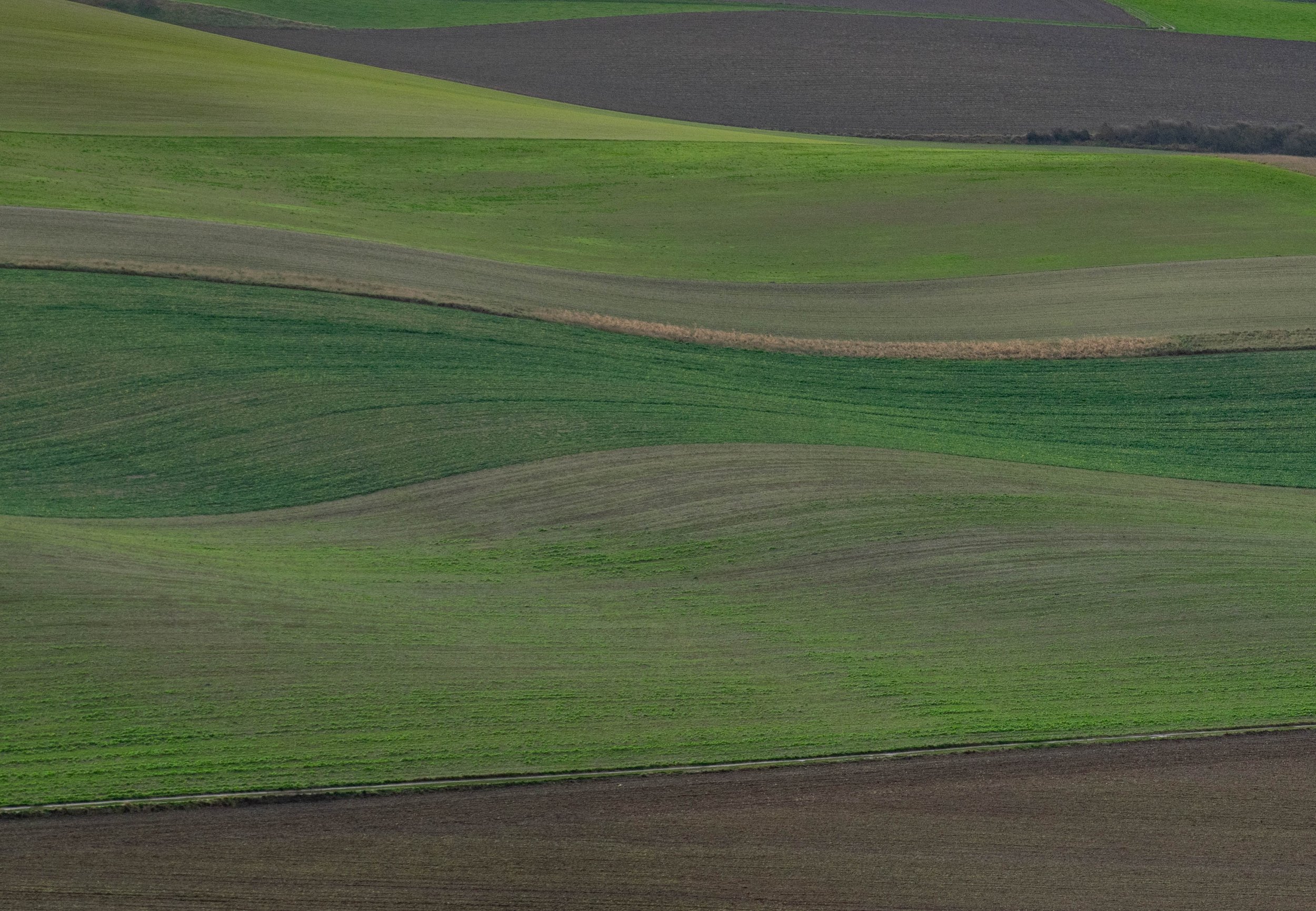
The landscapes of large scale farming are for me "quantum spaces" : one passes - by car most often and especially not on foot - from one village to another, since the hamlets are very rare and the cities are compact and distant to each other. Thus, one makes "jumps" between villages, without stopping in between. In this rural space, it’s extremely rare to meet pedestrians or walkers, only a few cyclists, but above all people going from point A to point B, in a fast and efficient way, who travel along dense road axis with processions of semi-trailers pass by. This place is located between Paris, the big harbours of the Channel and the Netherlands, and Germany in the East, so a lot of freight on the road. The only ones to really take over the space are the farmers, as if they had taken advantage of this empty ecological niche, overlooked by all, to use their powerful tractors and bring life to these barren expanses.
Whenever I meet farmers, I can feel the pride they take in their land, in their crops, and in their profession in general, and rightly so : it is a most noble profession in my opinion. It is more than a job, it is a cultural and ancestral heritage.
But what strikes me is how much agriculture, an activity deeply rooted in the soil, the terroir, passionately terrestrial and concrete, dependent on nature and all sorts of weather conditions, insects, diseases or in the long term, the condition of the soil, has on the other hand also become dependent on international factors, highly variable ones like the price of gasoline, which is very volatile, the stock market price of commodities, even wars raging on the other side of the world or European agricultural policies. This paradox, this gap is as interesting as it is worrying
A recent creation on the scale of history, field crops, and agriculture in general for that matter, have become highly technical since the last century: highly specialized tools, advanced scientific concepts, soil science and the use of fertilizers or treatments, a more complex financial aspect too, in order to finally be in tune with the modern world, to remain competitive and productive, and to respond to the staggering needs of a "service" society, an office society where fewer and fewer want to do this job. If this service society can more or less free itself from the soil -for a while only-, living off-ground in short, agriculture certainly cannot, and the gap between society and agriculture only creates risks as it grows wider.
Synthetic Phytosanitary product being sprayed over barley, in the morning as there is little wind and some humidity in the air
Phytosanitary products are substances, synthetically made in the case of large scale farming, meant to protect crop plants from various threats such as insects, diseases or fungi that used to plague food production in the past. But they also prevent adventitious flora from growing : plants are in an eternal competition between each other. Unwanted plant takes light, soil nutrients and space from wheat, colza or barley. Phytosanitary products have become an absolute necessity for farmers as it allows them to get a bigger yield and making more money from their land and be safe from most diseases and ensure a good yield. Not using products to get rid of unwanted plants would mean using tractors more to weed mechanically, but their engines eat up about 40 litres of fuel per hour. There is no such thing as a “perfect” choice, it’s about making a compromise and farmers will choose the option that will save them some labour. The counterpart of these products, or the negative externality we could say, stemming from their use is the heavy toll on wild life, especially insects which are a fundamental brick of the trophic network, the food web. Farmers themselves suffer from these product as they have a higher chance of developping lymphoma, leukemia or prostate cancer, compared to the rest of the population.
Big bags of fertilizer and chemical elements stacked
The progress made in chemistry during the twentieth century have made possible unprecedented yields in humankind history, with phytosanitary products, but also fertilizers, allowing to harvest more on good soils but also on soil which could not be farmed before, lacking only the organic elements to be good, fertile farming lands. This allowed a revolution in the geography of some region like the Marne in France who never specialized in agriculture in history but is now a major agricultural producer with huge crops.
Even the byproducts of oil industry are used to produce some fertlizers that we call “synthetic fertilizers”. The other major type of fertilizer in this large scale farming is the “Mineral” fertilizer. Both are made from non renewable resources and our global food system is dependent on them. Minerals used for the fertilizers are extracted in many countries, and processed in a globalised manner too.
Barley under the sun, quiety undulating in the wind
Immature wheat, the type of culture requiring the most fertilizer
Eggs’ colour matching that of the hoe !
Visiting an old Farmhouse
In a small and quiet village I meet a very nice farmer in the yard of his farm, a beautiful brick farmhouse rebuilt after the war with a large home, sheds, attics and garage to handle 150 hectares of land. I have the privilege of a tour in the building and a presentation of the machines. Two tractors to work in pairs during the big works of summer, the seeders adapted to different types of crops, the hoe -where we discover together a nest full of green eggs-, the plough and other tools. He is proud to show me his beautiful brick building that his family has been living in for many, many years, and his land, including a plot of flax. He explains to me that the flax production will be sold to a Belgian company and then sent to China, where the processed fiber will be woven, to finally bring back the textile or the finished clothes to Europe, to be sold. Oddity of our time.
These big machines remind me of monsters at rest, fearing the light, waiting in the shadows for the harvest season that is fast approaching, so they can make their engines roar






